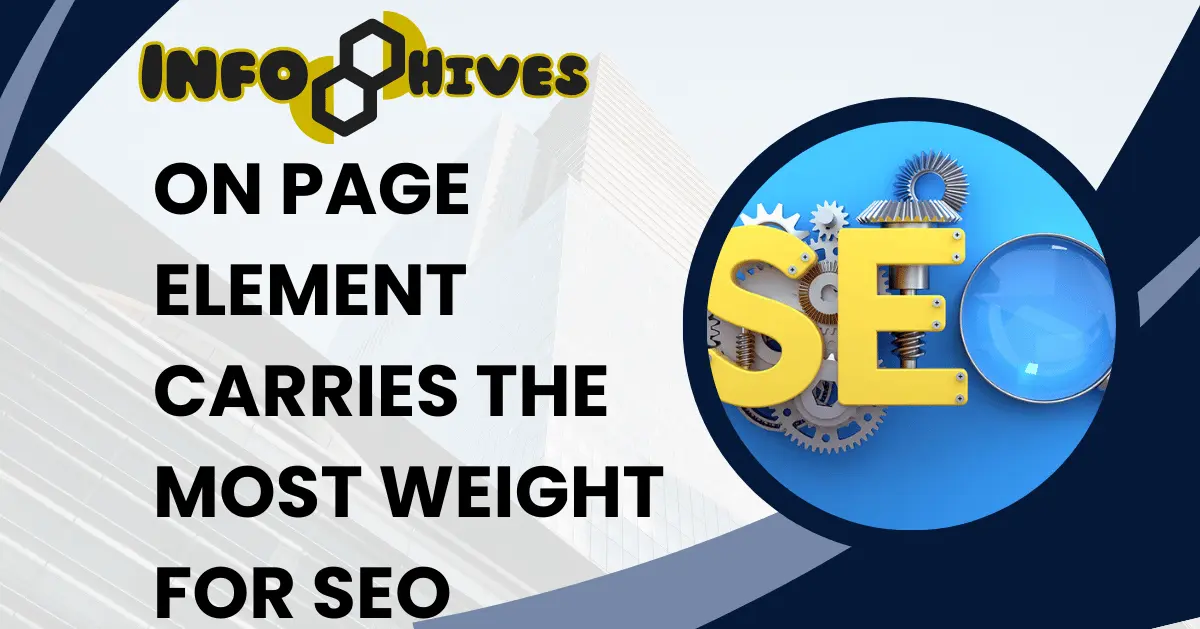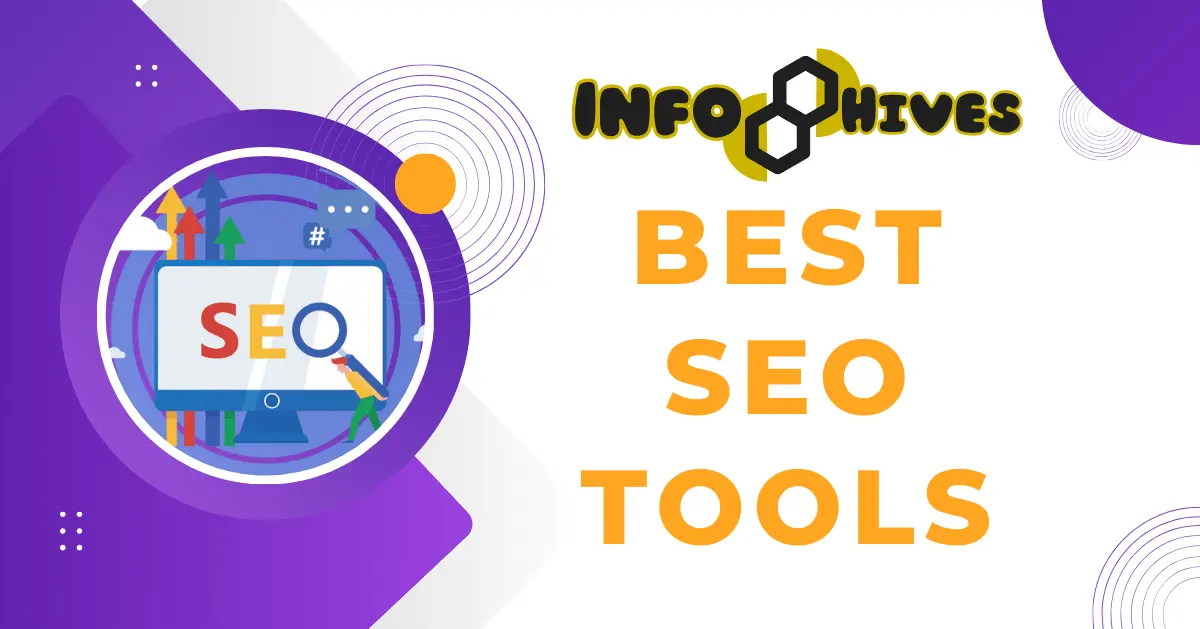On-page SEO plays a vital role in determining how well your website performs in search engine results. It involves optimizing various elements directly on your web pages to improve their visibility and relevance to search engines like Google. Key on-page elements include title tags, which act as clickable headlines in search results; meta descriptions, which summarize page content and can influence click-through rates; and headings (H1, H2, etc.), which structure content and help search engines understand its organization.
Additionally, the quality and relevance of your content are crucial. High-quality, informative content that matches user intent is favored by search engines. URLs should be clear, concise, and reflect the content they lead to. Optimizing images with descriptive alt text helps search engines understand visual content.
1. Title Tags
Title tags are a crucial component of on-page SEO. They are HTML elements that define the title of a web page and appear in the search engine results as clickable headlines. The title tag is one of the first things users see, making it essential for attracting clicks.
To optimize title tags, make sure they are concise and relevant, and include primary keywords. Ideally, keep them under 60 characters to ensure they display correctly in search results. A well-crafted title tag not only improves your click-through rate but also helps search engines understand the content and context of your page. By focusing on creating effective title tags, you can significantly enhance your website’s visibility and relevance in search engine rankings.
2. Meta Descriptions
Meta descriptions are short summaries that describe the content of a web page. They appear below the title tag in search engine results and provide a brief preview of what the page is about. Although meta descriptions do not directly impact search rankings, they play a crucial role in improving click-through rates.
To create effective meta descriptions, ensure they are clear, compelling, and accurately reflect the page content. Keep them under 160 characters to avoid truncation in search results. Including relevant keywords can make them more appealing to users and search engines alike. By crafting informative and enticing meta descriptions, you can attract more visitors to your site and enhance the overall user experience.
3. Headings (H1, H2, etc.)
Headings, such as H1, H2, and so on, are essential for structuring web page content. They help organize information into a clear hierarchy, making it easier for both users and search engines to understand the content. The H1 heading is typically the main title of the page, while H2 and subsequent headings serve as subheadings that break down the content into sections.
For effective on-page SEO, use headings to logically structure your content. Ensure that each page has a single H1 heading that accurately reflects the main topic. Use H2, H3, and other subheadings to divide the content into manageable sections, making it more readable. Including relevant keywords in your headings can also help improve your page’s search engine visibility.
4. Content Quality and Relevance
Content quality and relevance are crucial for effective on-page SEO. High-quality content engages readers, answers their questions, and provides value, making them more likely to stay on your site and return in the future. Search engines prioritize content that is well-written, informative, and relevant to the user’s search intent.
To improve content quality, focus on creating original, accurate, and comprehensive information. Ensure your content is well-organized, easy to read, and free of grammatical errors. Relevance is equally important your content should directly address the topics and keywords that users are searching for.
5. URL Structure
URL structure is a key aspect of on-page SEO that can influence both user experience and search engine rankings. SEO-friendly URLs are clear, concise, and descriptive, making it easier for users and search engines to understand what the page is about.
To optimize your URL structure, keep URLs short and include relevant keywords that reflect the page content. Avoid using long strings of numbers or unnecessary characters. For example, a good URL for a page about on-page SEO might be “www.yoursite.com/on-page-seo-tips” instead of “www.yoursite.com/page1234”.
6. Image Alt Text
Image alt text, or alternative text, is a brief description added to the HTML code of an image. This text is used by search engines to understand the content of the image and by screen readers to assist visually impaired users.
To optimize image alt text, provide a clear and concise description of the image. Include relevant keywords naturally, but avoid keyword stuffing. For example, instead of “IMG_1234”, use “fresh-red-apples-in-basket”. This not only helps with SEO but also enhances accessibility for all users.
Using descriptive and keyword-rich alt text improves your website’s search engine visibility and ensures that your content is accessible to a broader audience. By optimizing your image alt text, you enhance both the user experience and your site’s SEO performance.
7. Internal Linking
Internal linking is the practice of linking to other pages within your website. It helps users navigate your site, establishes a hierarchy of information, and distributes page authority across your site, which can improve your SEO.
To optimize internal linking, ensure that links are relevant and use descriptive anchor text that indicates the content of the linked page. For example, instead of a vague “click here,” use “learn more about on-page SEO”.
A good internal linking strategy connects related content, helping both users and search engines find and understand your pages. By effectively utilizing internal links, you improve user experience, encourage visitors to explore more of your site, and enhance your site’s overall search engine performance.
8. Page Load Speed
Page load speed is a critical factor in on-page SEO that affects user experience and search engine rankings. Faster-loading pages provide a better user experience, reducing bounce rates and increasing the likelihood of visitors staying longer and engaging more with your content.
To improve page load speed, optimize your images by compressing them without losing quality, and minimize the use of heavy scripts and plugins. Enable browser caching and reduce server response time by using a reliable hosting service. Tools like Google PageSpeed Insights can help identify specific areas for improvement.
9. Mobile Optimization
Mobile optimization is essential for ensuring your website performs well on mobile devices, which are increasingly the primary way people access the internet. Google prioritizes mobile-friendly websites in its search rankings, making mobile optimization crucial for SEO.
To optimize for mobile, use a responsive design that adjusts your site’s layout based on the device’s screen size. Ensure text is readable without zooming, and buttons and links are easily clickable. Compress images and use efficient coding practices to improve load times on mobile networks.
FAQs
Q. What is schema markup and how does it affect SEO?
Schema markup is code added to your website that helps search engines understand your content better. It can improve search visibility and result in rich snippets.
Q. How does user experience (UX) influence on-page SEO?
A good user experience keeps visitors on your site longer and reduces bounce rates, which can positively impact your search engine rankings.
Q. What role do outbound links play in SEO?
Outbound links to high-quality, relevant sites can enhance the credibility of your content and improve your SEO.
Q. Why is content freshness important for SEO?
Regularly updating your content signals to search engines that your site is current and relevant, which can improve your rankings.
Q. How do social sharing buttons affect on-page SEO?
Social sharing buttons make it easy for users to share your content, increasing its reach and potentially driving more traffic to your site, which can boost your SEO.
Conclusion
No single on-page element carries the most weight for SEO. Instead, a combination of several key elements works together to improve your search engine rankings. Title tags, meta descriptions, headings, content quality, URL structure, image alt text, internal linking, page load speed, and mobile optimization all play vital roles in enhancing your website’s visibility and relevance.
Focusing on these elements ensures your site is well-structured, user-friendly, and optimized for search engines. By paying attention to each of these aspects, you can create a robust SEO strategy that boosts your site’s performance, attracts more visitors, and achieves your online goals.






